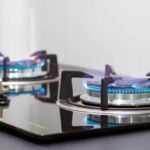1What is a range hood?
A range hood helps to remove smoke and grease from cooking, preventing unpleasant odors from lingering in the kitchen. It also helps to create a clean and healthy environment in your kitchen.
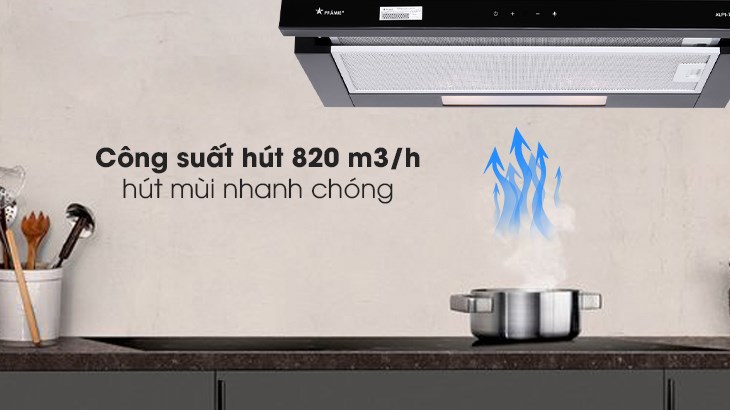
It helps to remove lingering food odors in the kitchen after cooking.
Structure of a range hood
A range hood consists of 4 main parts: the body, fan motor, circuit boards, and grease filters. These parts include:
- Body: The outer shell is typically made of durable metal material with an electrostatic paint coating to make it easy to clean and increase durability.
- Fan motor: This is the main component inside the range hood and is available in two types: single (or dual) turbine and single fan.
- Circuit boards: These help users set and select suitable fan speeds for their cooking processes.
- Grease filters: These filters remove grease and oil odors, and some brands also include activated carbon filters to optimize odor removal during cooking.
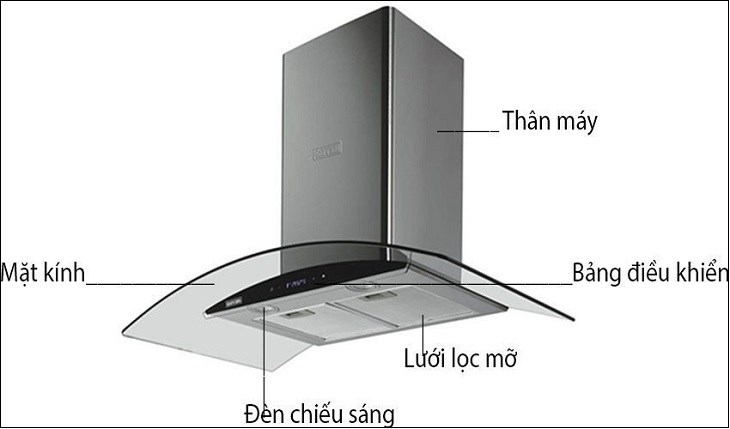
Main components of a range hood
Working principle of a range hood
A range hood operates on a simple working principle. When you plug in the power, the hood is supplied with electricity. The fan motor inside starts sucking in air.
During cooking, the grease filter traps grease and the activated carbon filter removes odors. Afterwards, the exhaust gases from the kitchen are ventilated through the ducts installed on the wall or ceiling, ensuring a well-ventilated cooking space.
Each type of range hood will have different suction power depending on the fan’s working ability. You can adjust the fan’s power during cooking to avoid excessive energy consumption for short cooking times, saving electricity while extending the lifespan of the hood.

The working principle of a range hood is to efficiently suck in and process odors through the ducts
2Tips for saving electricity when using a range hood
Choose a range hood suitable for your kitchen size
On the market today, range hoods come in various sizes to fit different kitchen sizes. Additionally, there are two types: and straight glass range hoods (with a suction power of 1000m3/h or higher).
For small kitchens, prioritize choosing range hoods with high suction power to ensure optimal removal of indoor air, providing a healthier and fresher cooking environment.
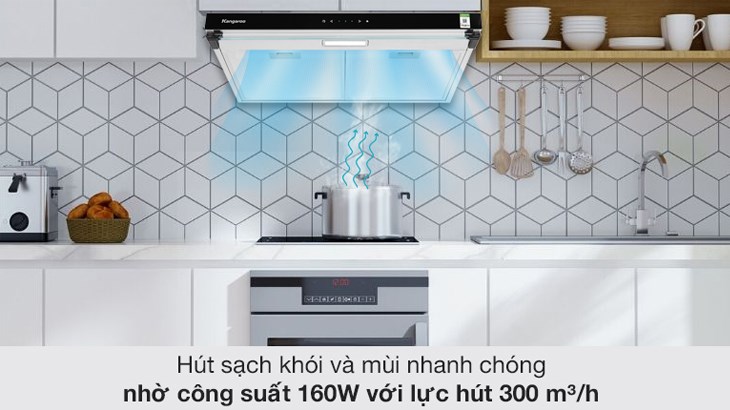
Designed for wall mounting with a suction power of 300m³/h, suitable for small and narrow kitchens
Thoroughly check the appliance specifications
Before deciding on a range hood, you need to thoroughly check the power and functions it offers. Additionally, you should also look into the dimensions (length x width) to ensure it fits your kitchen space.
Furthermore, read customer reviews and comments to gain a better understanding of the product and choose a range hood that meets your requirements.
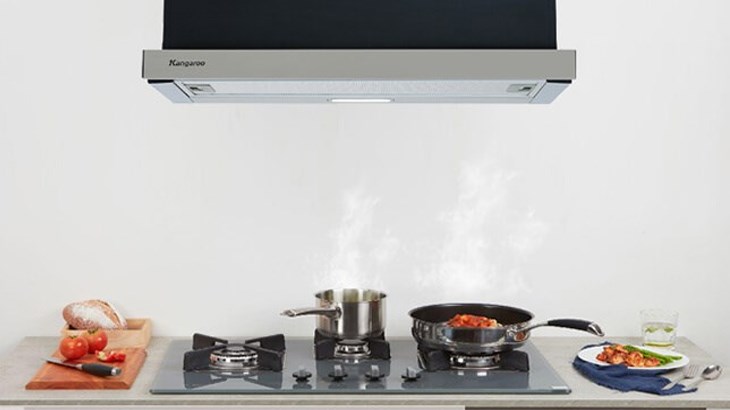
You can refer to some popular range hood brands such as Kangaroo, BlueStone, Hafele, etc.
Turn on/off the range hood at the right time
After cooking, do not immediately turn off the hood. Let it run for an additional 5-10 minutes to optimize the removal of any remaining smoke and ensure energy efficiency.
In addition, during installation, avoid placing the range hood too close to the cooking area or open flame, as this can cause the hood to overheat and potentially reduce its lifespan.
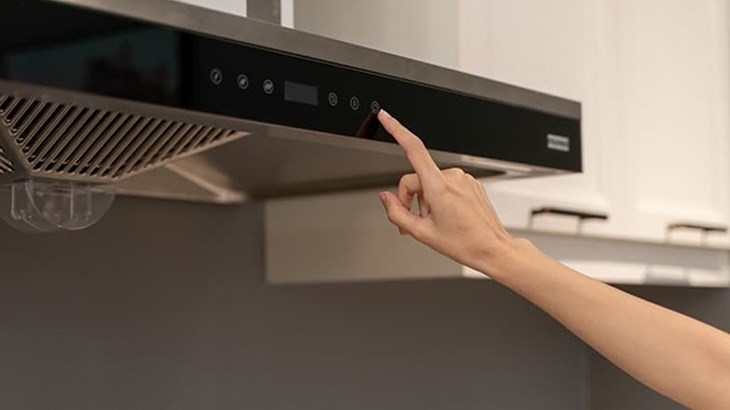
Avoid turning off the hood immediately after cooking to save energy
Regularly clean and maintain the hood
For range hoods using grease filters, you need to clean them regularly, either every 6 months or once a year, to ensure effective odor removal. Additionally, every 7-10 days of use, you should clean your hood to prevent excessive grease buildup, which can lead to unpleasant odors caused by bacteria and mold. During hood cleaning, it is advisable to disconnect the power for 3-4 hours to better maintain the appliance.
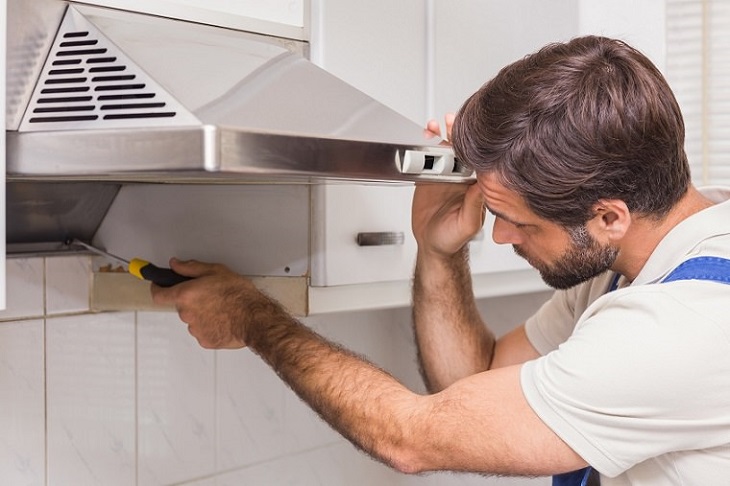
Maintain your range hood to ensure optimal odor removal
Ensure stable power supply
Before purchasing a range hood, make sure your home’s power supply is stable and not prone to frequent power outages or fluctuations. Ensuring a stable power supply allows the hood to operate at its best and save electricity.
In addition, you should only turn off the range hood once a week for maintenance and cleaning. Do not disconnect the power after each use, as reconnecting the power will consume more energy.
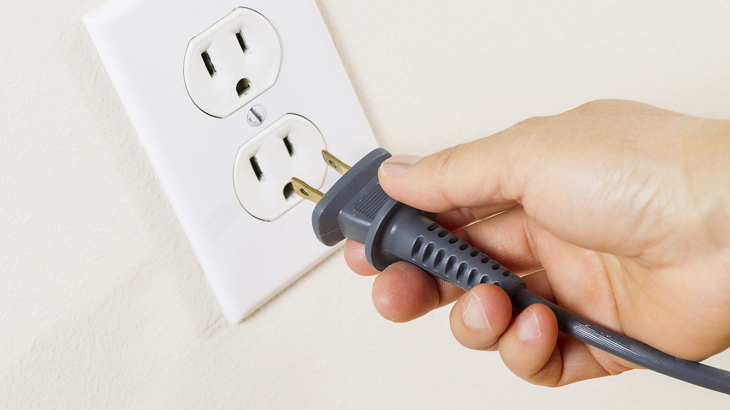
Avoid frequently disconnecting the range hood from the power source
Hopefully, this article has provided you with a better understanding of range hoods and tips for maximizing energy savings in your kitchen!



























